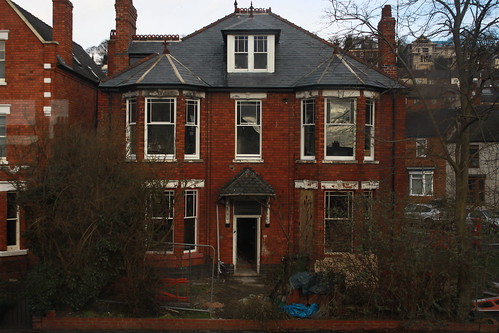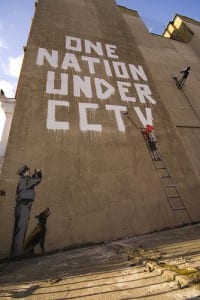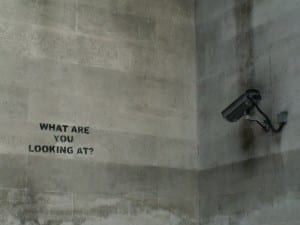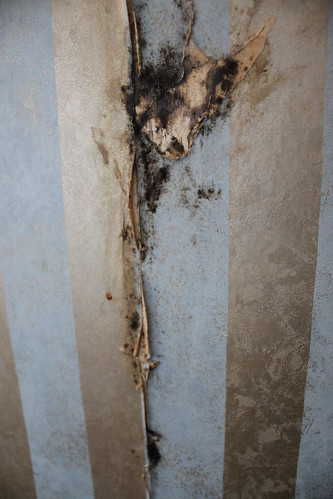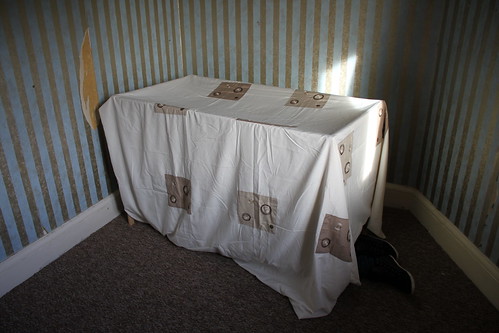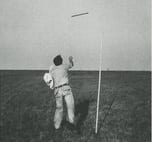Lone Twin’s performances are public involved, and performances are built on the interaction they have with their audiences and the reactions they get from them. Gary Winters and Gregg Whelan, who were the founders of Lone Twin, are not actors, and do not use acting in their work, they perform as themselves. When discussing their work, Gregg spoke; “So it’s not at all an actorly thing; it’s just a reporting back, and trying to give it some space.” ((Williams, David and Carl Lavery (2011) Good Luck Everybody: Lone Twin: Journeys, Performances, Conversations, Wales: Cambrian Printers)). This is something I have mentioned before that I will be doing – not acting as if I am a rabbit, but just being myself in a rabbit costume.
One of their performances called ‘Totem’ involved them dressed as cowboys carrying a full sized telegraph pole in a straight line through the city of Colchester. Some members of the public would stop and ask them what they were doing and others would even join in and help them carry it for a while. Their work includes the public and that helps them structure their performances: “The first times that it happened people were suddenly, without any framing of it, inside the piece, doing what it was we were doing.” ((Williams, David and Carl Lavery (2011) Good Luck Everybody: Lone Twin: Journeys, Performances, Conversations, Wales: Cambrian Printers)). The notion of interacting with the audience, their lives and their stories over a cup of tea in the kitchen while dressed as a rabbit I think will be very interesting to see how they actually do respond.
Pinocchio Pipenose Household Dilemma
Another idea that could be incorporated is having some sort of installation piece, which would be interesting as some of my ideas were to completely change the purpose of the space, which is the concept of installation art. Paul McCarthy’s works show the way he used fairy tale like characters and changed how they are viewed, making them absurd and shocking. One example would be in 1994 when he dressed in a Pinocchio costume with a mask and a long plastic nose attached to it, in a house like setting. In the piece he uses the nose to blow bubbles in a bowl of ketchup and force feeds chocolate spread through another Pinocchio nose and then covers himself in it. It is something to be watched and doesn’t include interaction with audience members. The idea of using fairy tale characters works well with my performance as my idea came from The White Rabbit from Alice in Wonderland. Perhaps creating something absurd could also work as the dislocation of having a giant rabbit in a kitchen is initially quite surprising and this concept could be played around with.
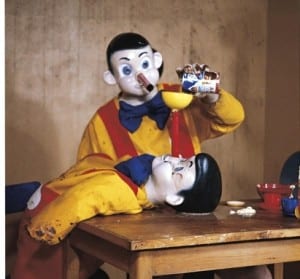
McCarthy, Paul (1994) Pinocchio Pipenose Household Dilemma, Online: “http://www.mutualart.com/Artwork/Pinocchio-Pipenose-Household-Dilemma/7CACBC3406FEFD05” (accessed: 24 February 2013) |
